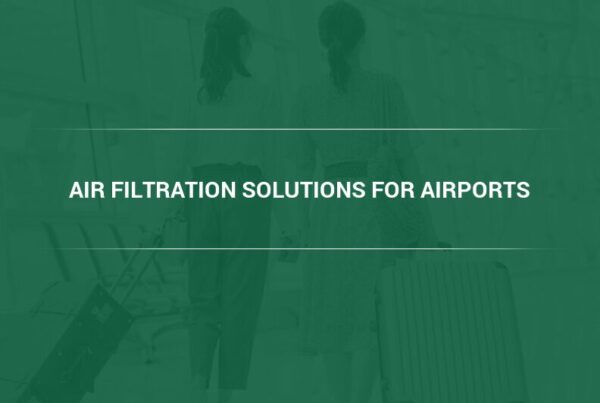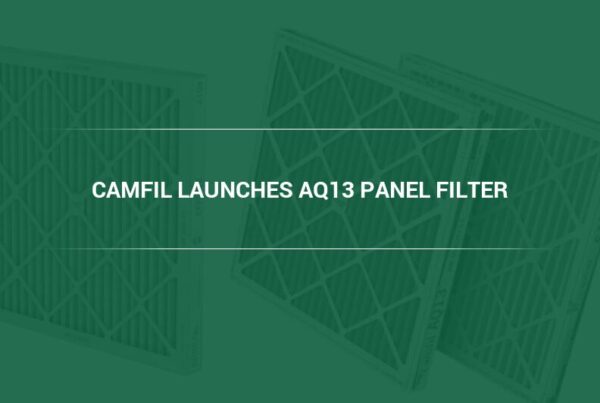Knowing how to change your own industrial air filters is a valuable skill. It can save you a lot of money and time, preventing you from having to hire and wait for HVAC service people. Many common problems with ventilation simply result from a clogged filter, meaning that knowing how to change your filter will allow you to deal with some of the most common HVAC issues yourself. What should you know about changing your own industrial air filters? What is the process for changing commercial filters within an HVAC system?
Issues Caused by Clogged Commercial HVAC Air Filters
Commercial replacement HVAC air filters should be changed at intervals as recommended by the filter manufacturer. If filters are left in a system beyond the manufacturer’s recommendation they can become clogged. Clogged industrial air filters can cause a number of different problems, including reduced airflow, difficulty heating and cooling, increased energy bills, and increased exposure to dangerous air pollutants.
Clogged filters can also cause a number of other issues including water damage of drains and vents in an HVAC system, or damage to air-conditioning compressors or heat pumps. This occurs because there isn’t as much air flowing over the evaporator coils and the coolant builds up within them causing freezing of evaporator coils which can require major HVAC system repairs. Additionally, air filters prevent the build-up of dirt in the ducts, and periodic duct cleaning can be expensive.
Not only do clogged filters prevent a building from cooling properly, they also prevent it from heating properly. Since clogged filters restrict the amount of air that can flow through ducts, the heat within the heat exchanger just continues to mount. This can result in severely reducing energy efficiency and may even cause the system to shut down because of extreme temperature build-up in the heat exchanger, a universal safety feature on all heating units.
Some poorly designed industrial filters can even unload particles if they are not changed in time, exposing the occupants of a building to an increased number of particles from air pollution, which can create serious health problems after long periods of exposure.
Industrial Air Filtration Units Prevent You from Breathing in Toxic Particles
Particulate matter (PM) pollution can come from a number of different sources, and PM pollution is tiny. It’s made out of tiny liquid and solid particles in the air which can penetrate people’s lungs and bloodstreams, doing damage to the respiratory and cardiovascular systems. Many of these particles are fractional in size compared to the width of a human hair.
“These particles are called PM10, PM2.5 and PM1. PM10 refers to particles smaller than 10 µm across, PM2.5 refers to all particles smaller than 2.5 µm in diameter, while PM1 refers to particles smaller than 1 micron in size. ” stated Camfil’s Charlie Seyffer, Manager of Marketing & Technical Materials and 37-year ASHRAE member and active committee participant. “Exposure to particulate matter can cause a number of different health problems including stroke, heart attack, asthma, chronic obstructive pulmonary disease, and an increased risk for lung cancer.” (1)
Nitrogen dioxide and sulfur dioxide are colorless gases primarily released by the combustion of fossil fuels in heaters and by cooking devices. Nitrogen oxide becomes nitrogen dioxide after it mixes with ambient oxygen in the air, and exposure to nitrogen dioxide can cause chest pain and difficulty breathing, as well as the exacerbation of previously existing respiratory conditions like asthma. Similarly, sulfur dioxide irritates the eyes and lungs. It is mainly released by industrial processes, contributes to smog and can increase a person’s risk of developing cardiovascular problems and lung infections.
Volatile organic compounds (VOCs) are compounds which can react with heat and sunlight in the atmosphere to create ground-level ozone. Ozone at the ground level is harmful to people’s health, damaging people’s lungs, and it can permanently decrease lung function if people are exposed in sufficient quantities. The smog created by ground-level ozone not only harms people’s lungs, it also harms the environment by contributing to the greenhouse effect.
Carbon monoxide is an odorless and colorless gas which comes from the incomplete combustion of fossil fuels. Adequate levels of oxygen render carbon monoxide harmless as it immediately becomes the less dangerous carbon dioxide. Yet when fossil fuels are burned and there’s not enough oxygen in the immediate area, carbon monoxide is released. Carbon monoxide prevents the lungs from getting the oxygen they need, and as such it can quickly lead to confusion, nausea, and death.
Nitrogen dioxide, sulfur dioxide, VOCs, and ozone are not removed by typical industrial grade air filters. They require special air filters designed to remove gases.
Replacing Filters and Maintaining Industrial Air Filtration and Ventilation Efficiency
When replacing your own filters there are a few different practices you should follow. To improve the efficiency of your industrial air filtration and ventilation system, it’s important that you follow the correct procedures. A filter that is improperly installed can cause a variety of problems.
“When ordering your new filters, be sure that the filters are the correct size for your HVAC system. An improperly sized filter won’t suffice. Filters that are too large won’t fit in the system while filters that are too small won’t fit in the filter housing and can create air bypass, leading to unfiltered air bypassing the filter,” explains Camfil USA’s Charlie Seyffer. “After you have the correct size filters, be sure to remove the old filters carefully to avoid exposing the service person and local environment to any dust. The inside of the ventilation system should still be wiped down with a cloth or paper towel to remove any particles of dirt left behind. After cleaning up, install the new filters by matching the arrows on the filters with the direction of airflow within the system..” (2)
If you have a reuseable air filter and wish to clean it, you should first remove the dirty air filter, then clean the filter holding frame with a vacuum or cleaning cloth. After the frame is clean, clean the filter itself with a hose or other water source. You want to soak the filter with water and scrub it with a combination of vinegar and water, which eliminates the buildup of bacteria in the filter. You’ll then need to let the filter dry completely before reinstalling it in the filtration system.
While replacing your own filters can save you time and money, it’s also important to have regular inspections done by qualified maintenance professionals. There are some problems that can’t be solved by changing a filter and require maintenance work be done.
Selecting the Correct Filters for Your Commercial Air Filtration System
In addition to selecting the right size of filter for your HVAC system, it’s important to choose the right type of filter for commercial air filtration systems. Filters come in different grades, capable of absorbing different levels of air pollutants. You need to choose the quality of filter that’s right for you.
“Industrial air filters are given ratings between 1-16 MERV (Minimum Efficiency Reporting Value). The higher a filter’s MERV rating, the smaller the particles of pollution it is capable of removing,” says Seyffer. “Most commercial or industrial facilities use MERV 13 or better to protect the building occupants and the processes involved.
Industrial Air Filter Manufacturers Can Help You Choose The Correct Filters
Industrial air filter manufacturers like Camfil USA can be invaluable resources when selecting the right type of industrial air filter to buy for your HVAC system. Because of how important it is to purchase the correct type and size of filter, you may want to seek professional guidance when choosing your filter. Air filter professionals can advise you on how best to install your filter, which filters to purchase in the first place and the best maintenance practices for your HVAC system.
Improperly installed filters can create a number of different problems, such as filter bypass and increased energy bills. If filters are installed the wrong, the HVAC system will need to work harder to push air through the vents.
Because the guidance of qualified industrial air filter manufacturers is so essential, you should click here to contact Camfil USA today. Camfil USA can answer all your questions regarding the proper installation and operation of industrial air filters, and provide you with high-quality air filters guaranteed to protect your health.
Sources:



